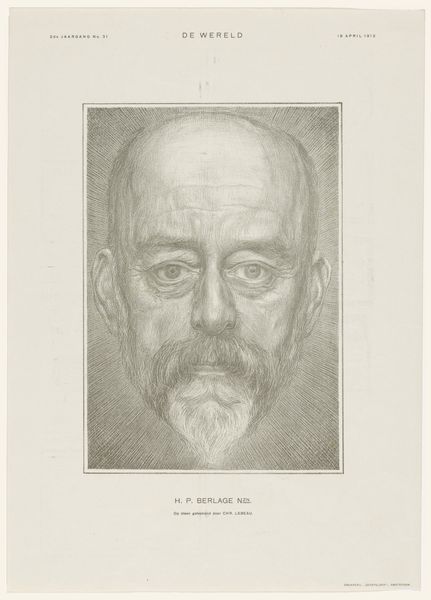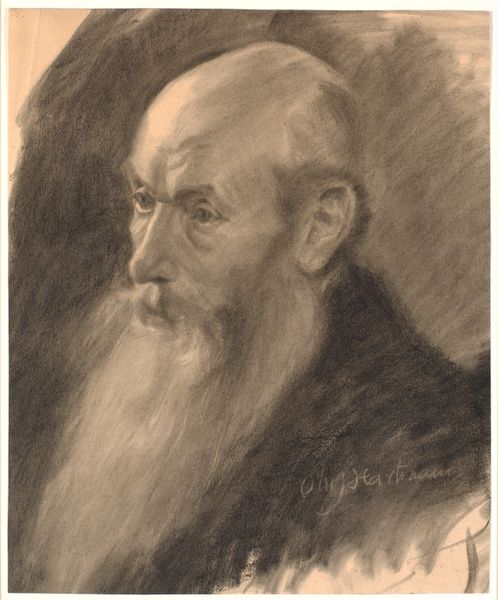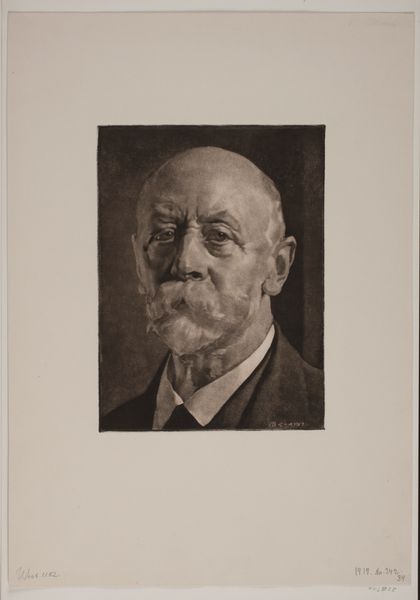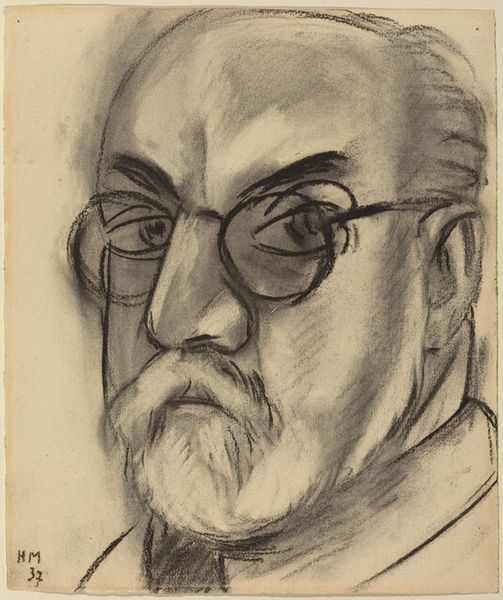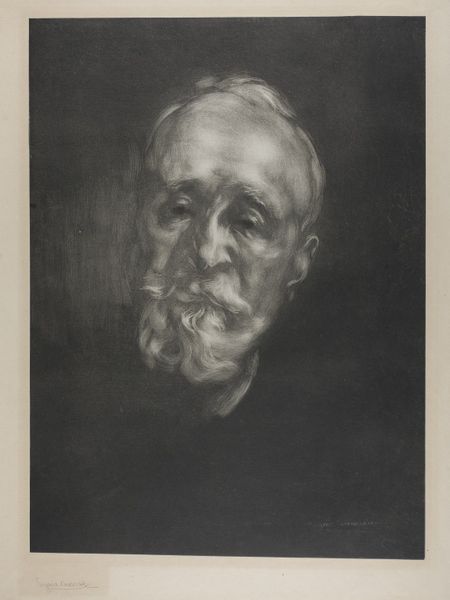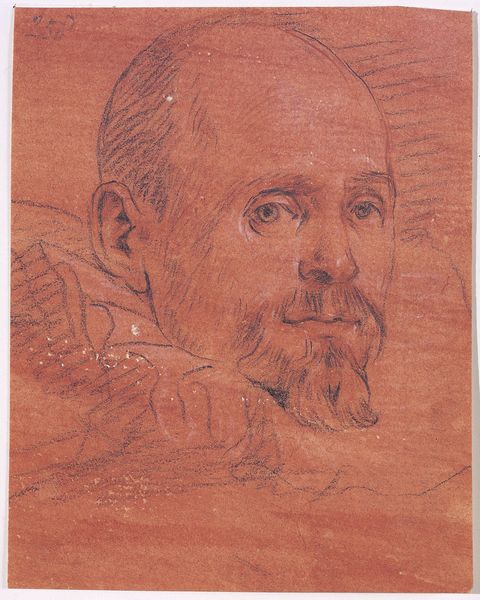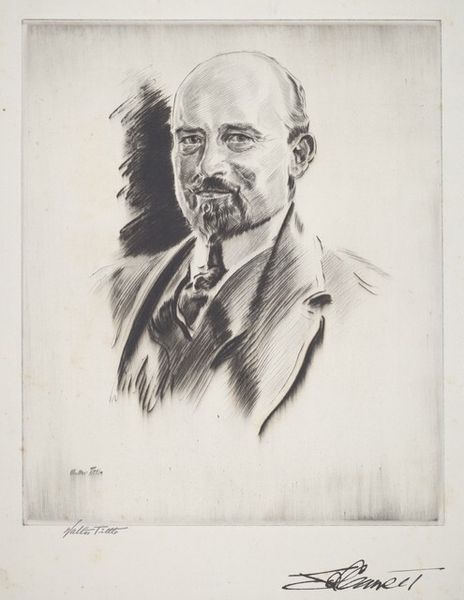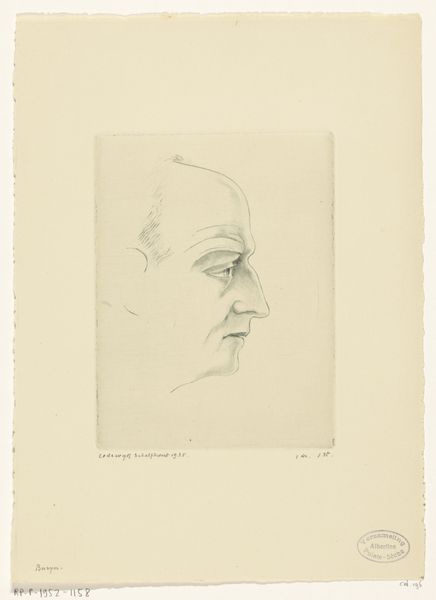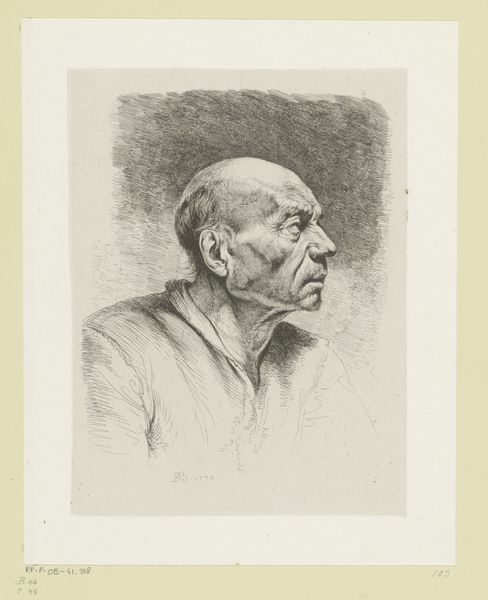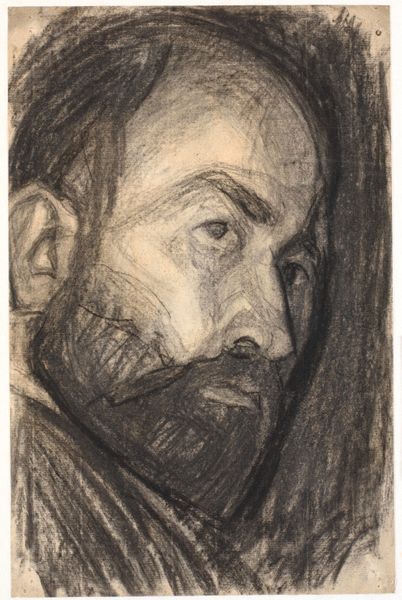
drawing, pencil, graphite
#
portrait
#
drawing
#
pencil
#
graphite
#
realism
Dimensions: height 309 mm, width 229 mm
Copyright: Rijks Museum: Open Domain
Curator: Looking at this drawing, “Portret van H.P. Berlage,” made with graphite and pencil in 1912 by Chris Lebeau and residing here at the Rijksmuseum, my first thought is: light! Editor: You're right; it almost feels like Berlage’s head is emitting light itself! There’s a softness but also such meticulous detail. I can see the lines of time etched around his eyes, and the faint radiating graphite, which gives him this ethereal quality, that feels a bit surreal. Curator: Exactly! It's as if Lebeau has captured not just his likeness but something deeper. The soft shadows contrasted against the bright, almost halo-like background create an aura of intellect and contemplation. I am feeling like maybe he’s about to let us in on some grand architectural secret? Editor: I think this piece is fascinating when considered through a formalist lens. Consider how Lebeau plays with symmetry, dividing the face neatly in two but still maintaining this lifelike asymmetry, those little quirks that make us individuals. The beard is textured while the cranium looks as if he almost wants to abstract it. There is certainly a contrast here. Curator: Absolutely! It's more than just a likeness. Knowing that Berlage was a rather influential architect might make it all click a bit more into place: there is something godlike to the way the head radiates a kind of structural ingenuity, don’t you agree? It's that perfect balance that great architects aspire to, captured so perfectly with such simple mediums. Editor: True! I suppose that for me, a portrait is always also an essay about its own time. It is about how much realism its public sphere is willing to take. By the time Lebeau drew this in 1912, photography already did the mimetic labor and painters had all the more reasons to experiment and deviate. What this says to me, I think, is a cultural demand to transcend the natural. Curator: Which is to say? That we are looking at how the society of that era wanted its titans depicted. With an extra zest. Interesting, indeed!
Comments
No comments
Be the first to comment and join the conversation on the ultimate creative platform.
